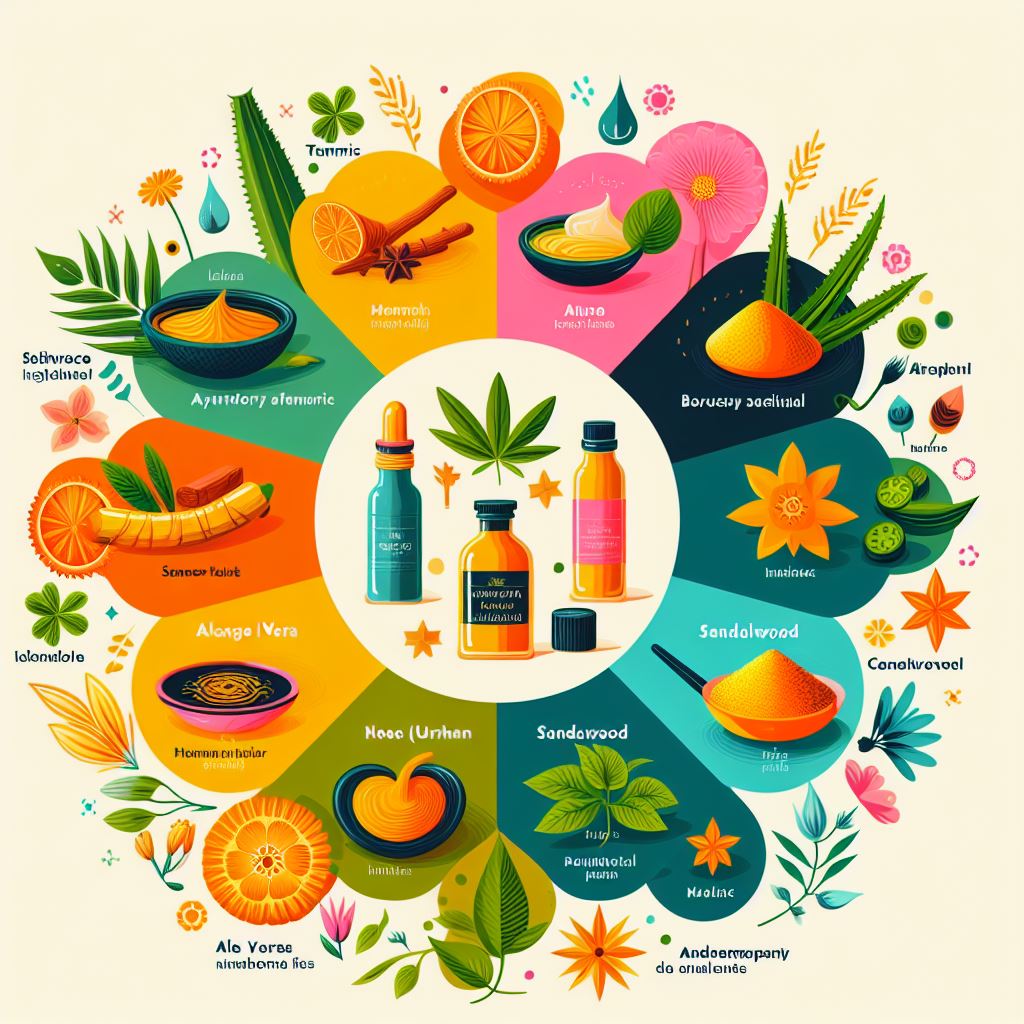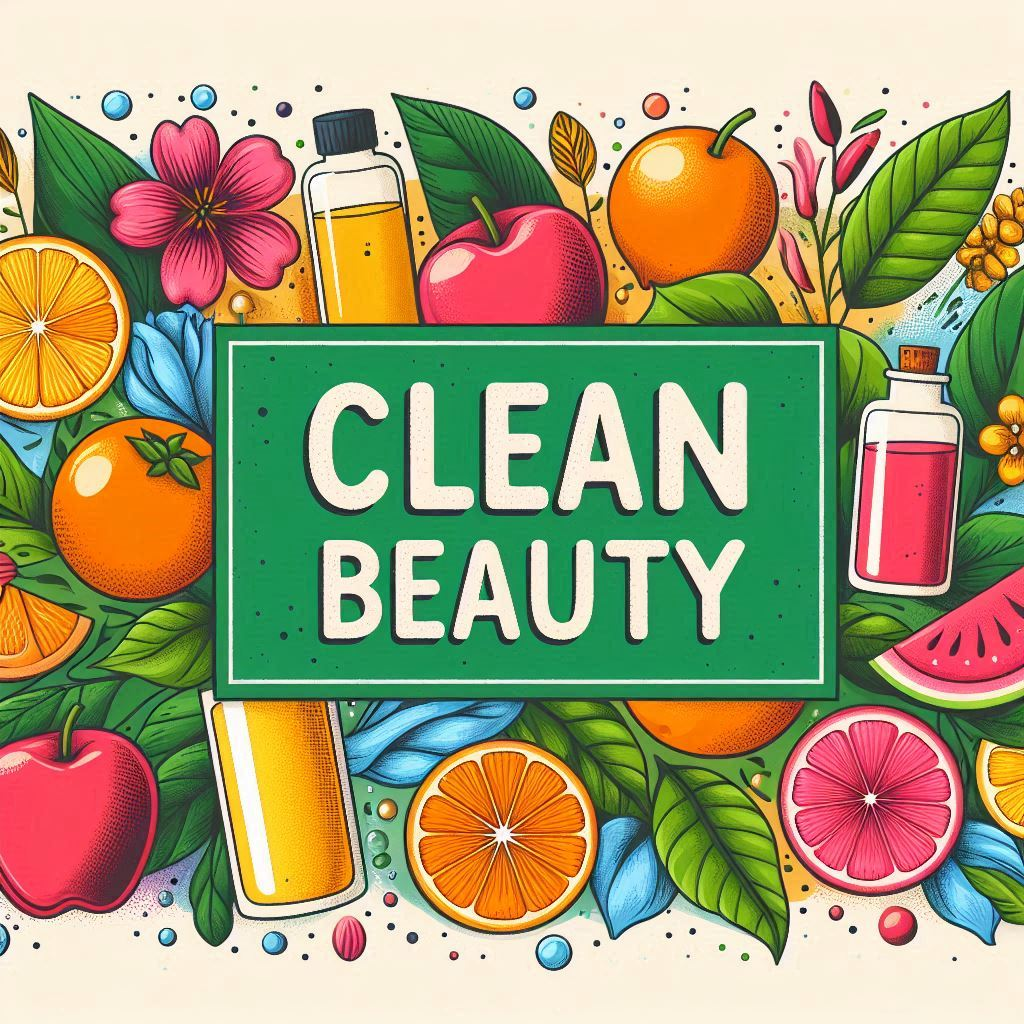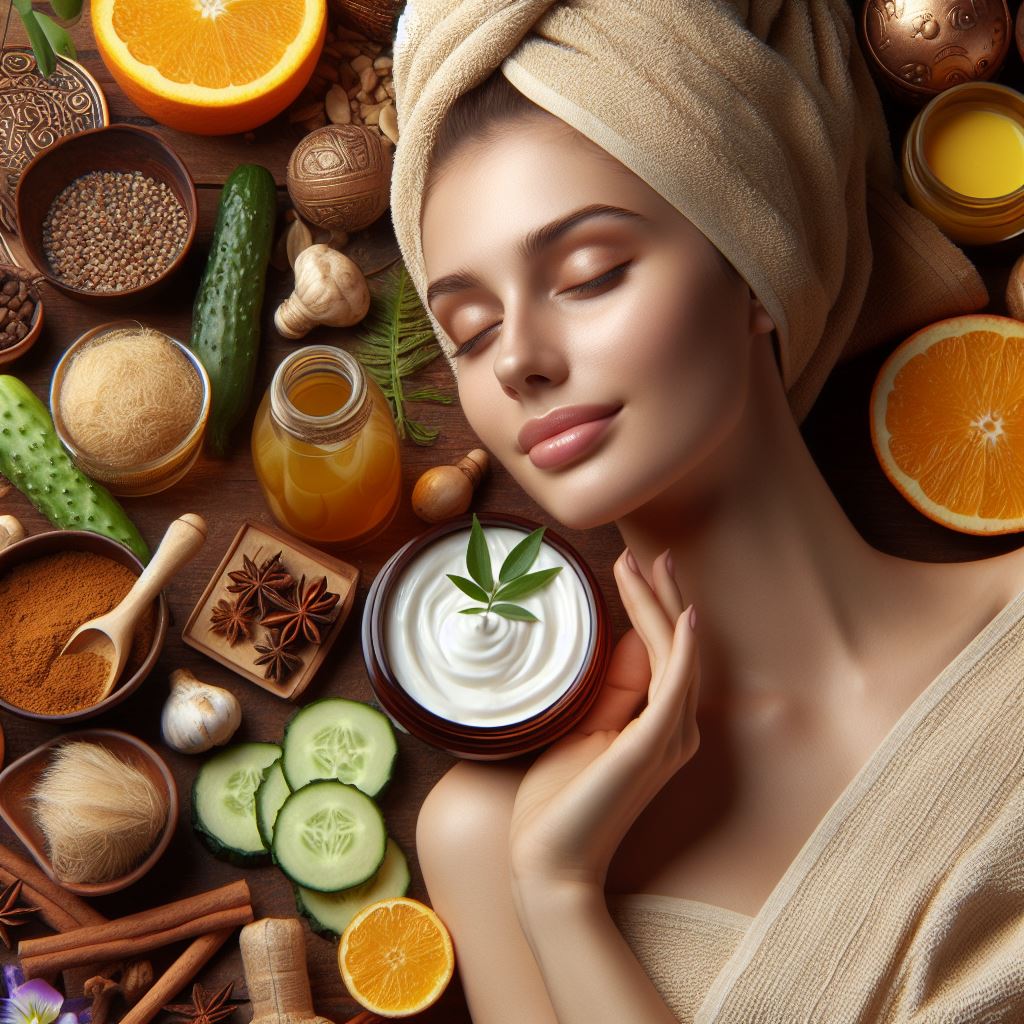Ayurvedic Ingredients In Skincare Products: What To Look For
When looking for Ayurvedic ingredients in skincare products, there are several key elements to consider. Ayurveda, a traditional system of medicine originating in India, emphasizes the balance of mind, body, and spirit for overall well-being. In skincare, Ayurvedic ingredients are chosen for their ability to promote skin health and balance. Here are some common Ayurvedic ingredients to look for:

- Turmeric (Haldi): Known for its anti-inflammatory and brightening properties, turmeric is often used in Ayurvedic skincare to even out skin tone and reduce redness.
- Neem: Neem is a powerful antibacterial and antifungal agent. It’s commonly used in skincare products to combat acne, soothe irritation, and promote clear skin.
- Sandalwood (Chandan): Sandalwood has a cooling and soothing effect on the skin. It helps reduce inflammation, calm irritated skin, and impart a natural glow.
- Amla (Indian Gooseberry): Rich in vitamin C, amla is prized for its antioxidant properties. It helps protect the skin from environmental damage, promotes collagen production, and brightens the complexion.
- Tulsi (Holy Basil): Tulsi is revered in Ayurveda for its purifying and detoxifying properties. It helps cleanse the skin, control acne, and promote a clear, radiant complexion.
- Ashwagandha: This adaptogenic herb helps the skin adapt to stress and environmental aggressors. It can improve skin elasticity, reduce signs of aging, and enhance overall skin health.
- Manjistha: Manjistha is known for its blood-purifying properties. It helps detoxify the skin, reduce blemishes, and promote a clear, radiant complexion.
- Licorice (Yashtimadhu): Licorice extract is used in Ayurvedic skincare for its skin-brightening and soothing properties. It helps reduce hyperpigmentation, soothe redness, and even out skin tone.
- Coconut Oil: Coconut oil is a staple in Ayurvedic skincare for its moisturizing and nourishing properties. It helps hydrate the skin, strengthen the skin barrier, and prevent moisture loss.
- Ghee (Clarified Butter): Ghee is deeply moisturizing and nourishing for the skin. It helps soften and hydrate dry, rough skin, leaving it feeling smooth and supple.
- Rose: Rose is a beloved ingredient in Ayurveda for its cooling and soothing properties. It helps hydrate the skin, reduce inflammation, and balance oil production.
- Triphala: Triphala is a blend of three fruits: Amalaki, Bibhitaki, and Haritaki. It’s rich in antioxidants and vitamins, making it beneficial for detoxifying the skin, reducing dark circles, and promoting skin health.
- Brahmi (Gotu Kola): Brahmi is known for its rejuvenating and anti-aging properties. It helps stimulate collagen production, improve skin elasticity, and reduce the appearance of fine lines and wrinkles.
- Manuka Honey: Manuka honey has antibacterial and healing properties. It helps hydrate the skin, soothe irritation, and promote wound healing.
- Jasmine: Jasmine is prized for its uplifting aroma and skin-nourishing properties. It helps balance oil production, reduce blemishes, and promote a healthy, radiant complexion.
- Mint: Mint has a refreshing and invigorating effect on the skin. It helps control excess oil, tighten pores, and soothe acne-prone skin.

- Triphala: Triphala is a blend of three fruits: Amalaki, Bibhitaki, and Haritaki. It’s rich in antioxidants and vitamins, making it beneficial for detoxifying the skin, reducing dark circles, and promoting skin health.
- Bhringraj: Bhringraj is known for its hair-strengthening properties, but it’s also used in skincare for its ability to promote healthy scalp conditions, which indirectly affect skin health.
- Yarrow: Yarrow is a natural astringent with anti-inflammatory properties. It helps tighten pores, reduce redness, and soothe sensitive skin.
- Frankincense: Frankincense has been used for centuries in Ayurvedic medicine for its rejuvenating and anti-aging properties. It helps promote cell regeneration, reduce the appearance of scars, and improve overall skin texture.
Conclusion
When it comes to skincare, why settle for anything less than nature’s best? Embrace the timeless wisdom of Ayurveda, a holistic approach to beauty that honors your skin’s unique needs and enhances your natural radiance.
Choosing skincare products with Ayurvedic ingredients is a transformative journey towards healthier, more vibrant skin. Start by considering your skin type and specific concerns. Whether you battle with acne, dryness, aging signs, or simply seek a radiant glow, Ayurvedic ingredients offer a solution rooted in nature’s bounty.
Look for products crafted with high-quality, natural, and organic ingredients. Say no to synthetic additives and harsh chemicals that can disrupt your skin’s delicate balance. Instead, opt for formulations infused with Ayurvedic treasures like turmeric, neem, sandalwood, and amla, each chosen for its unique benefits.
But why stop there? Your skin deserves the best, which is why combining Ayurvedic ingredients with other potent botanicals amplifies their efficacy. Think soothing rose, rejuvenating Brahmi, and healing Manuka honey – a harmonious blend designed to nourish, protect, and rejuvenate your skin from within.
Before fully committing, patch-test new products to ensure compatibility with your skin. This cautious approach ensures a seamless transition to your Ayurvedic skincare ritual, free from adverse reactions.
In the realm of skincare, Ayurveda isn’t just a trend – it’s a timeless philosophy that celebrates your skin’s natural beauty. So, why settle for anything less? Embrace the Ayurvedic way and unlock the secret to glowing, healthy skin – no questions asked.”
Discover the Power of Organic, Clean, and Natural Living
At organic-look we’re passionate about holistic well-being and helping you live your best life naturally. Explore our articles on organic, clean, and natural living, and take your journey to the next level with our exclusive well-being products. From T-shirts and mugs to drawstring bags, stickers, and more—each item is designed to inspire and support your healthy lifestyle.
Elevate your everyday life with products that reflect your commitment to wellness. Shop now and wear your well-being with pride!
Thank you for reading this far! I hope this article has provided valuable information on your journey to holistic health. Stay tuned for more updates, and feel free to leave your comments and questions below. Don’t forget to like, share with family and friends, and stay connected!


